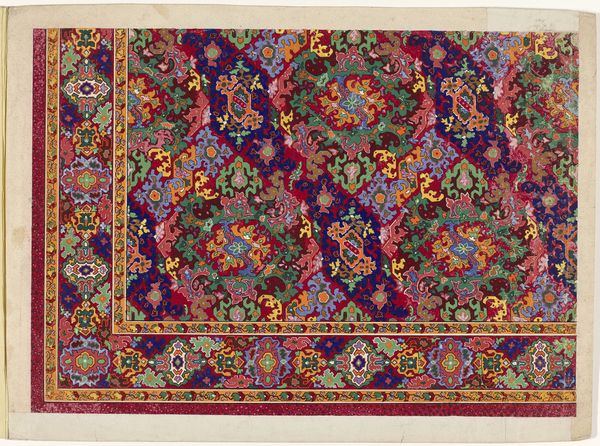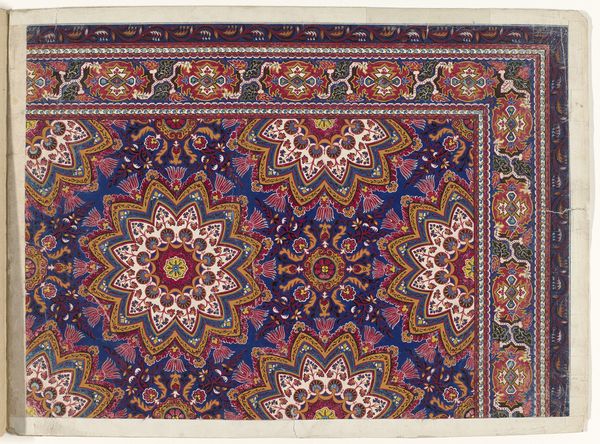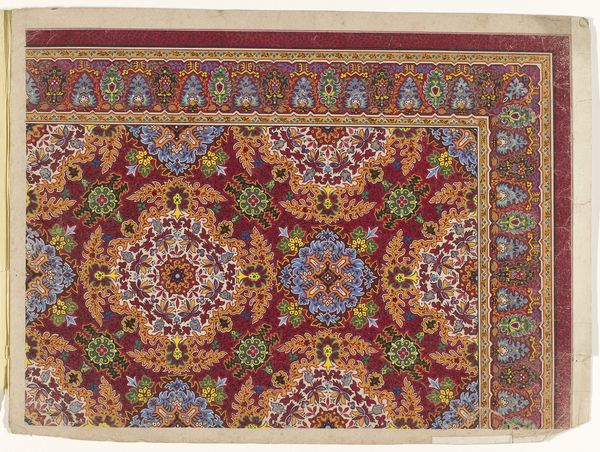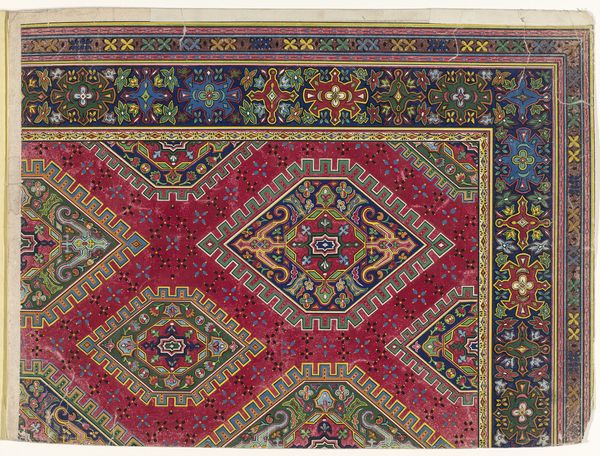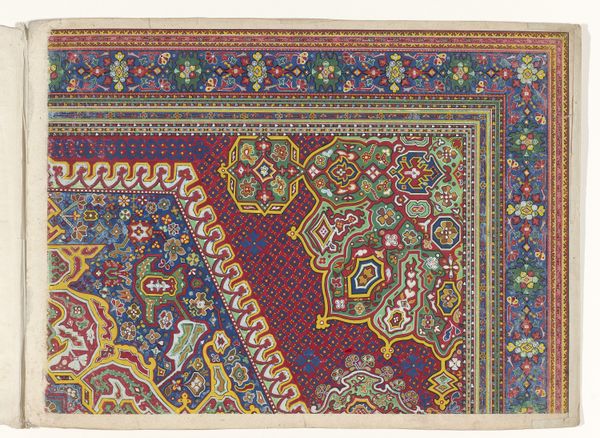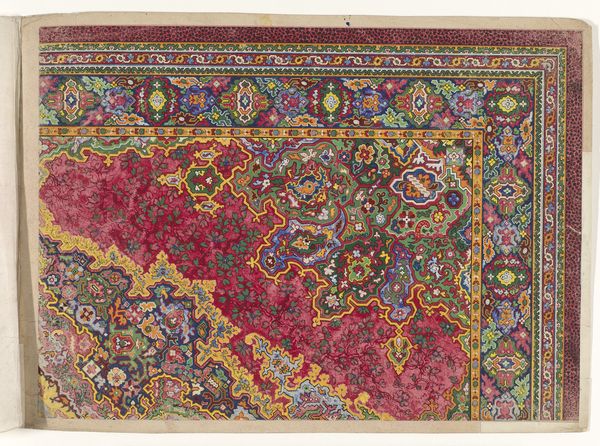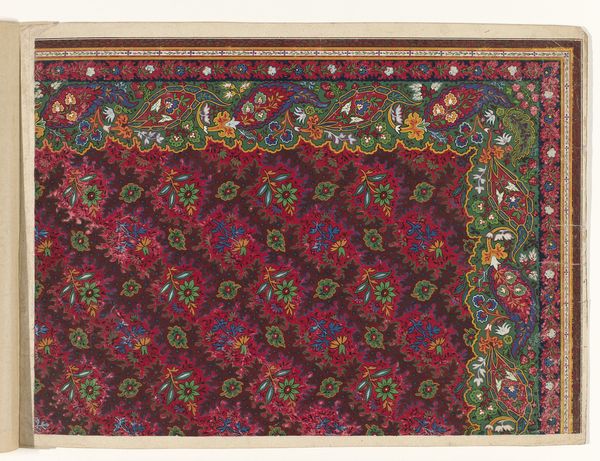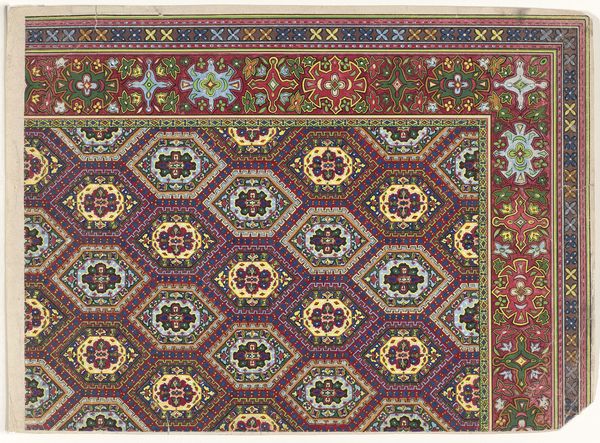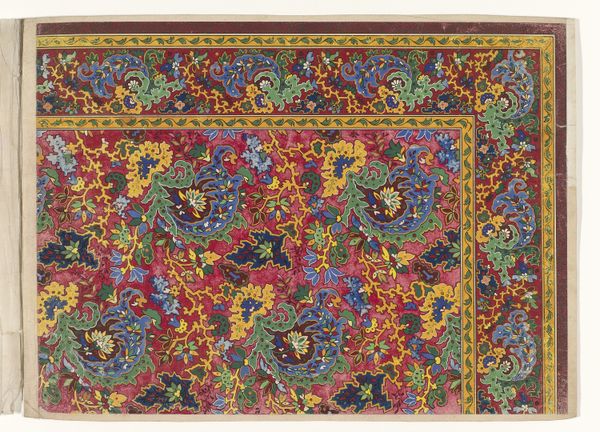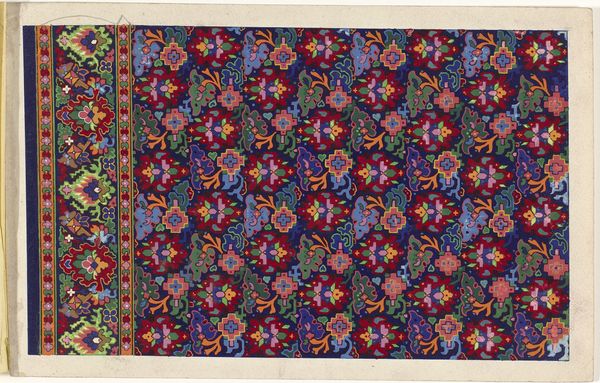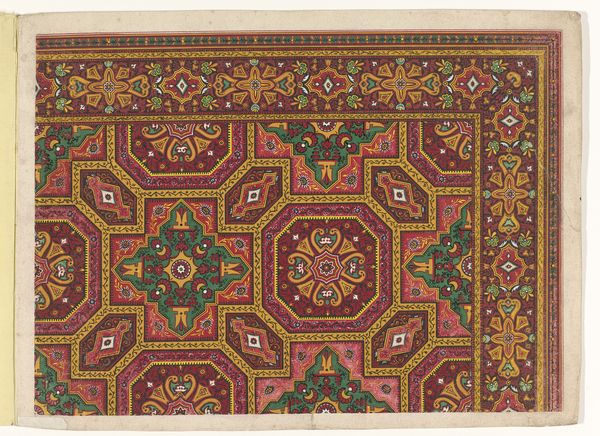
drawing, paper
#
pattern heavy
#
drawing
#
natural stone pattern
#
naturalistic pattern
#
paper
#
geometric pattern
#
ethnic pattern
#
organic pattern
#
geometric
#
repetition of pattern
#
vertical pattern
#
pattern repetition
#
decorative-art
#
layered pattern
Dimensions: height 287 mm, width 406 mm
Copyright: Rijks Museum: Open Domain
This carpet design was painted by an anonymous artist. Textile production has long been shaped by commerce and trade. These patterns carry symbolic meanings and cultural traditions across generations. We can look at the dyes used, the weaving techniques, and the pattern arrangements, and compare these with examples of carpet weaving across Persia and the Ottoman Empire. By doing this, the cultural origins of the design come into view. The carpet could have been commissioned by a merchant, traded between empires, or even presented as a diplomatic gift. It may reflect the globalizing forces of its own time, or a particular patron's aspirations. Historians look at objects like this as complex nodes in a web of economic, political, and cultural exchange. Understanding its meaning requires us to examine the social conditions that shape its production, circulation, and reception.
Comments
No comments
Be the first to comment and join the conversation on the ultimate creative platform.
